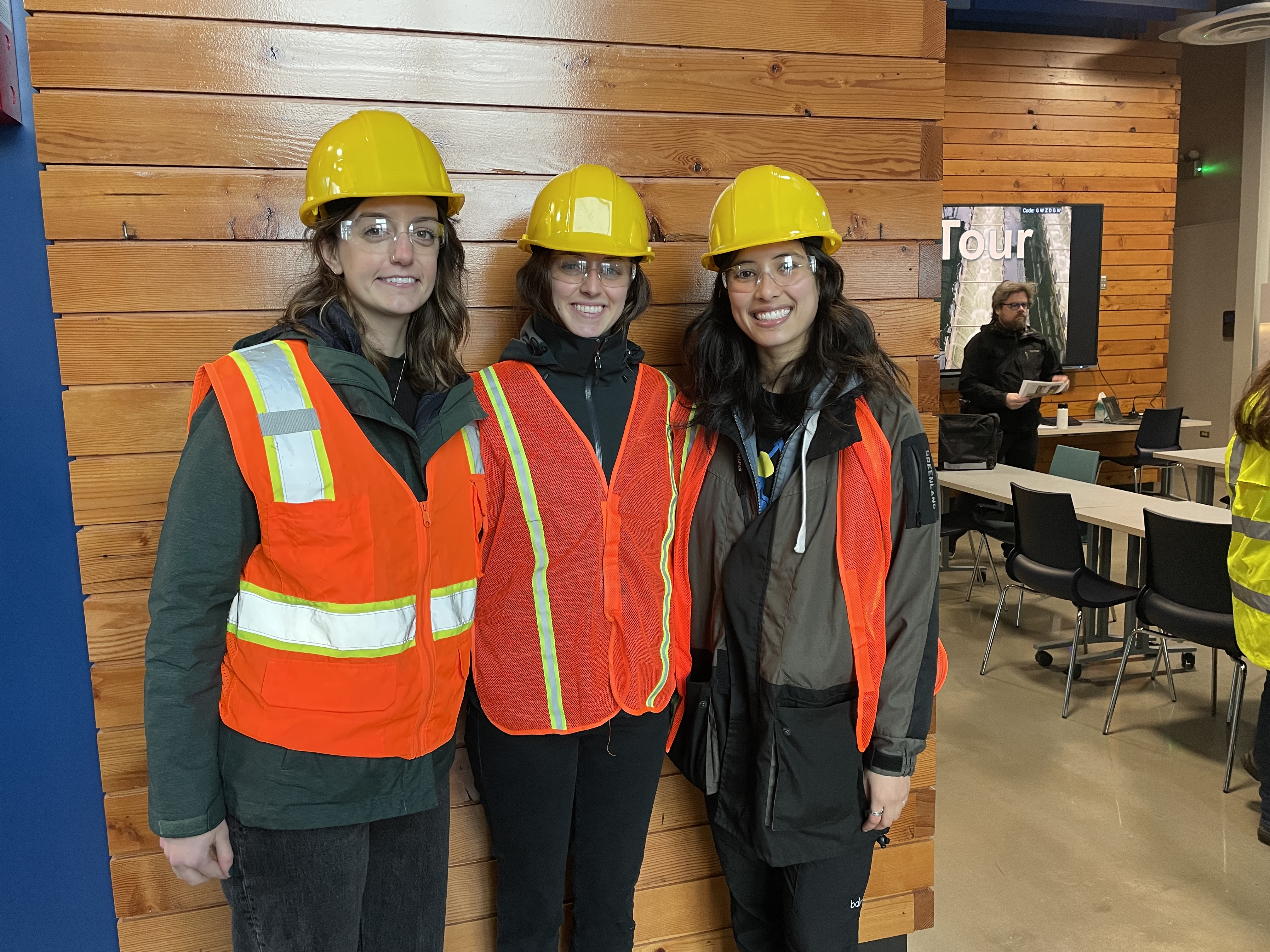On Wednesday, January 24th, the Seattle 2030 District, which is part of the larger 2030 Districts Network, hosted a tour of the Georgetown Wet Weather Treatment Station (WWTS). The Seattle network of districts is a private-public partnership composed of property owners and managers, services stakeholders, and community stakeholders. The 2030 Challenge was established by the non-profit organization Architecture 2030 and aims to achieve a 50% reduction in energy use, water consumption, and transportation emissions by the year 2030.
Four graduate students from the UW Landscape Architecture Program attended the tour to learn about the facility and its role in reducing polluted effluent from entering Seattle’s water bodies. This tour aligned directly with three of the students’ capstone projects, wherein they are creating a toolkit focused on proactively preventing pollution to the Duwamish River. Facilities like the Georgetown WWTS are one of many strategies that improve the health of our ecosystems, by preventing nonpoint source pollutants such as 6-PPD-quinone, hydrocarbons, and fertilizers from entering the Duwamish River and ultimately Puget Sound.

Tour participants observe the main infrastructure of the facility. These buildings house the technologies that conduct primary treatment as well as UV disinfection.
The Georgetown WWTS is an urban stormwater management facility that, when activated by heavy storms, diverts excess water from the Michigan St and Brandon St combined wastewater outfall systems. The WWTS is part of a greater Combined Sewer Overflow (CSO) Control Plan to reduce CSOs into local water bodies such as the Duwamish RIver. The project was located in Georgetown based on community feedback to King County and was in the works for over a decade before becoming operational in November of 2022. Since then, it has been awarded the Platinum Achievement Award for Sustainability, processed over 35 million gallons of combined sewer and stormwater, and has significantly reduced the amount of contaminated water directly entering the Duwamish River and Puget Sound. The WWTS was the first project chosen by the Environmental Protection Agency to receive the Water Infrastructure Finance and Innovation Act loan, which saves ratepayers over $30 million. The facility also features other green stormwater infrastructure such as a green roof, a rain garden, and pervious pavers.

Diagram explaining how the wet weather treatment facility is integrated into Seattle’s combined sewer system (Image courtesy of King County).
On the tour, students saw the equipment for each stage of the filtering and cleaning processes.
Stormwater that enters the WWTS from Michigan and Elliot Bay pipes undergoes primary and secondary treatments before being stored on-site or discharged to an outfall pipe on the Duwamish River. In primary treatment, trash and other debris like leaves and aggregate are screened from the water before entering a high-speed settling tank that uses sand, polymer, and coagulant to remove suspended solids. This process removes approximately 85% of the suspended solids in the water. Solids that are collected in this process are taken to West Point Treatment Plant to be processed. From here, the wastewater is processed into Loop biosolids before being transported to farms and forests as an enriching soil amendment for growing trees and other plants. After the solids have been removed a secondary treatment of germicidal UV light further purifies the water before it enters the Duwamish River via the outfall structure located underneath the SR-509 Bridge.
Given Georgetown’s industrial legacy and history of environmental injustices, there was a strong effort to make this an environmental and community asset. Throughout the design process, businesses and community members were involved via a Design Advisory Group, and over 100 additional community members offered feedback on the project. The project was designed to reduce chemical use at the station, support jobs through a local hire requirement, improve air quality with tree plantings, and create educational opportunities for students and other community members.

Meredith Grupe, Meaghan O’Connor Lenth, and Kat Golladay sporting their personal protective equipment as they prepare to tour the facilities.
Learn more about the WWTS here: https://kingcounty.gov/en/dept/dnrp/waste-services/wastewater-treatment/capital-projects/georgetown/about